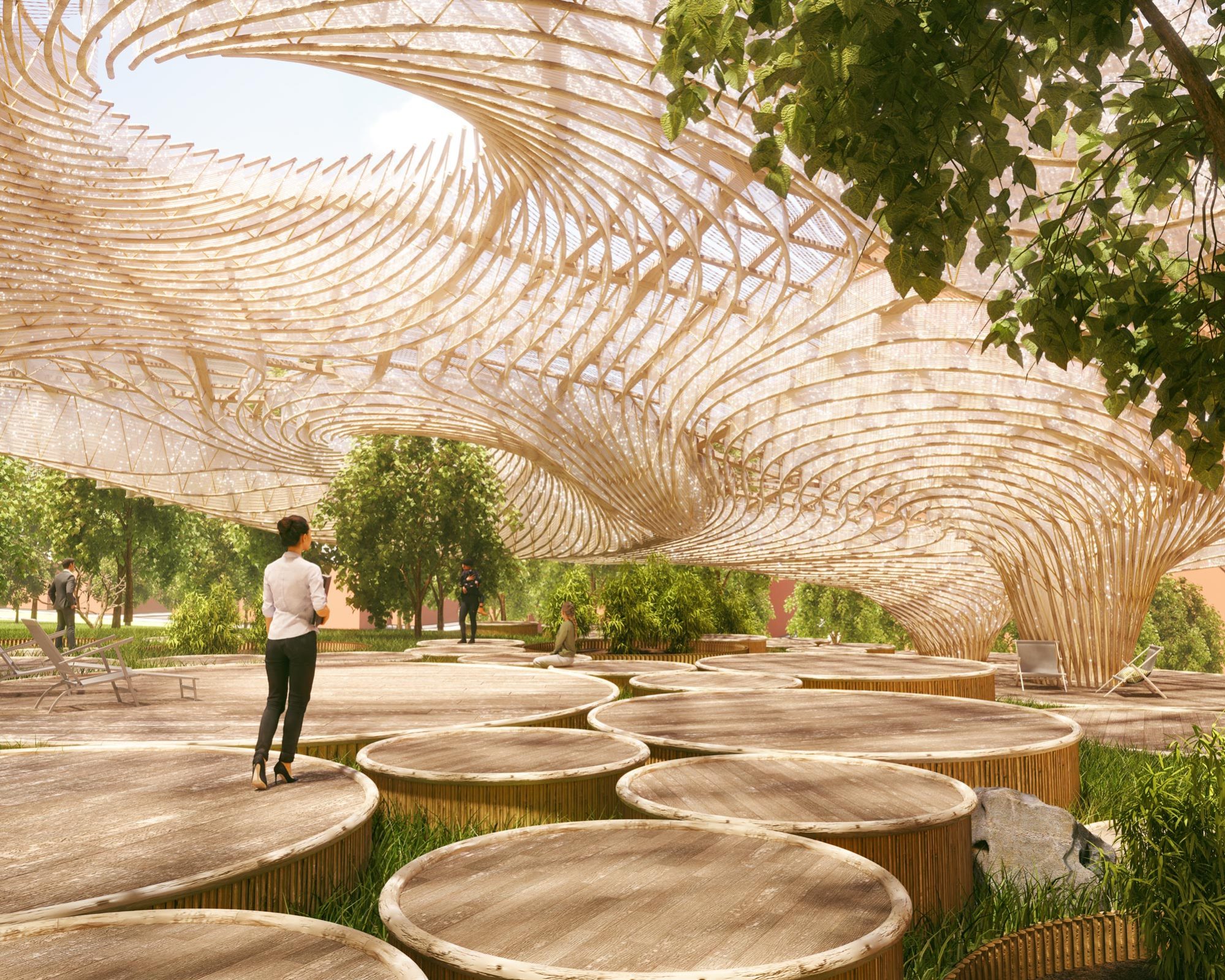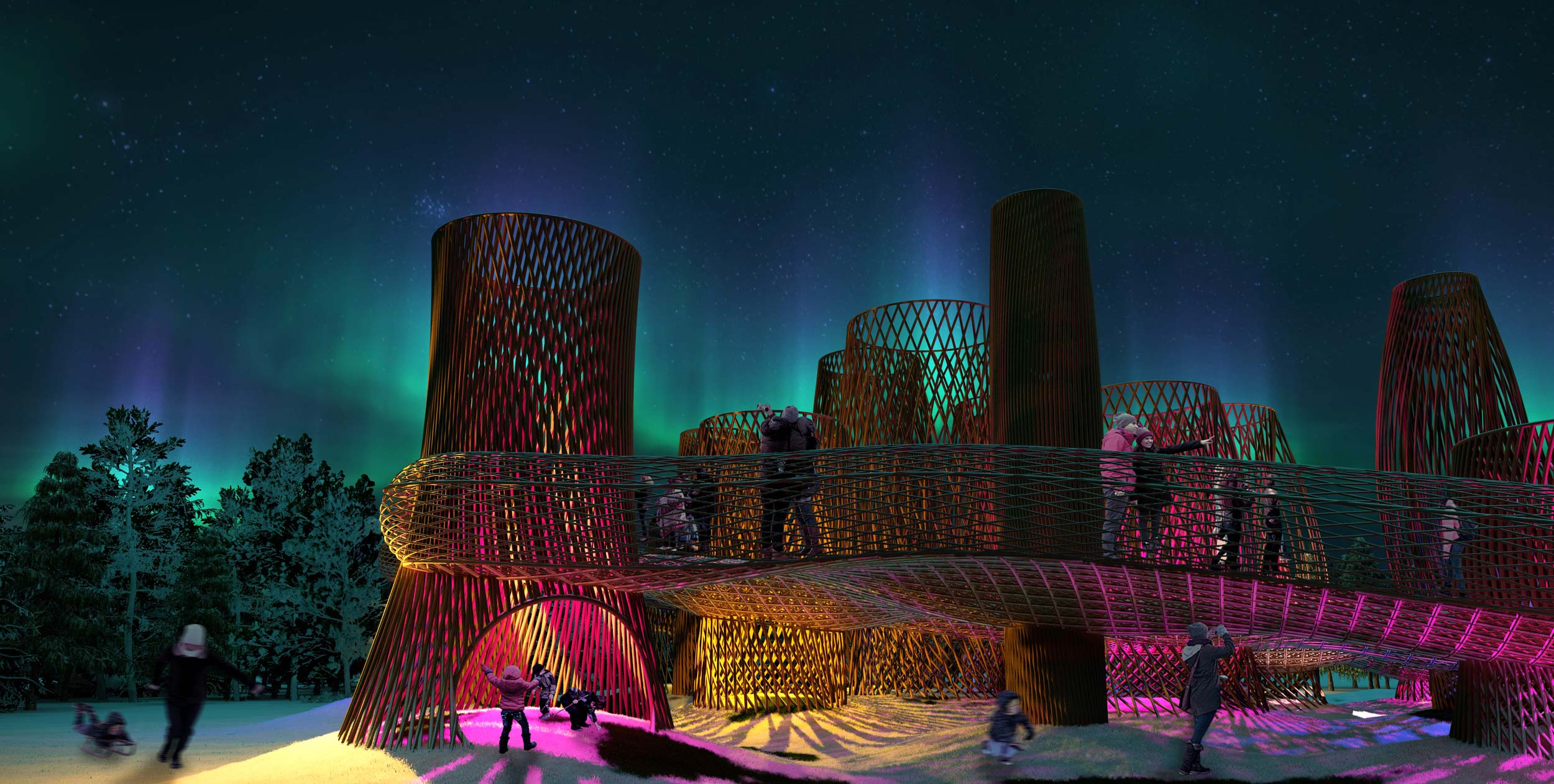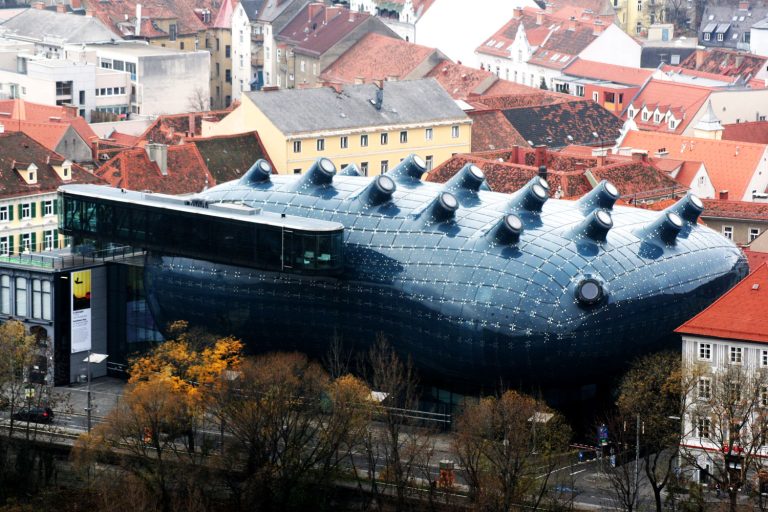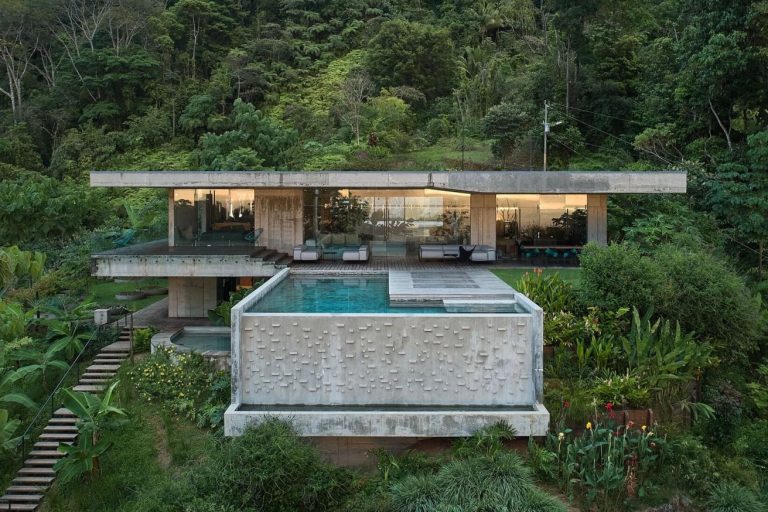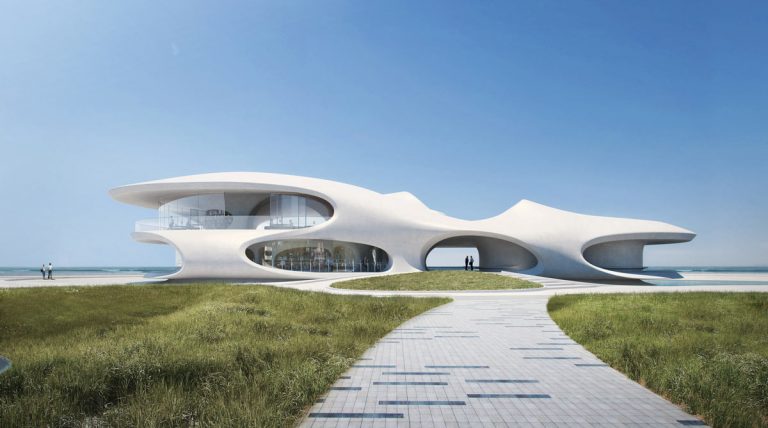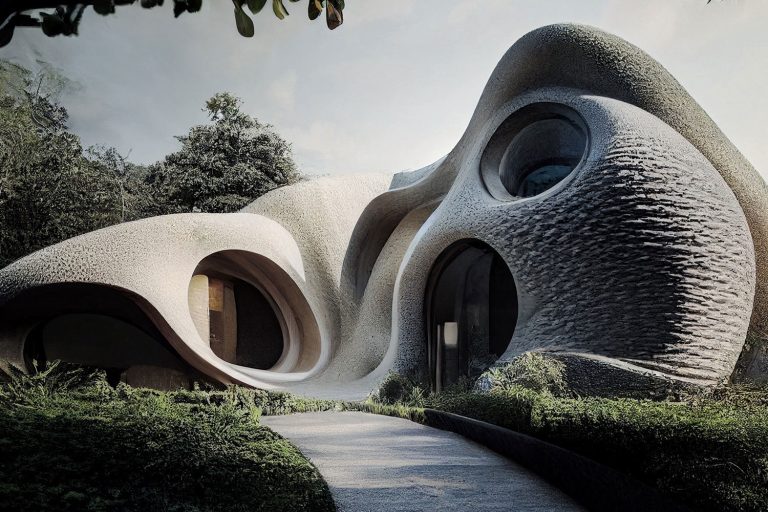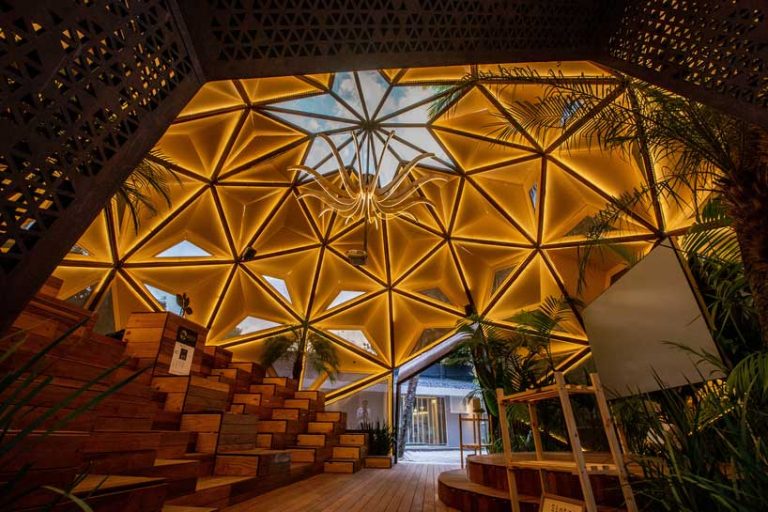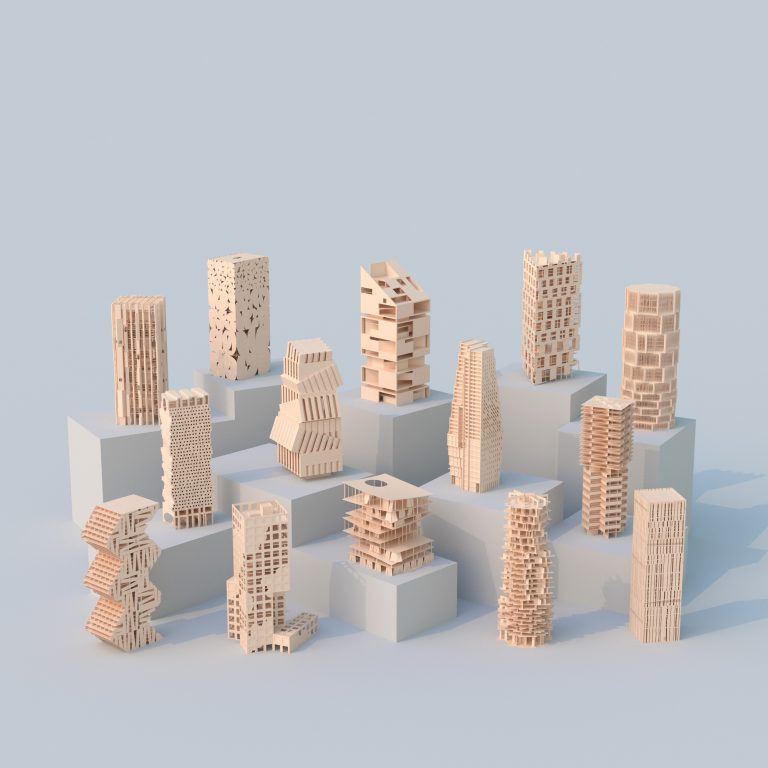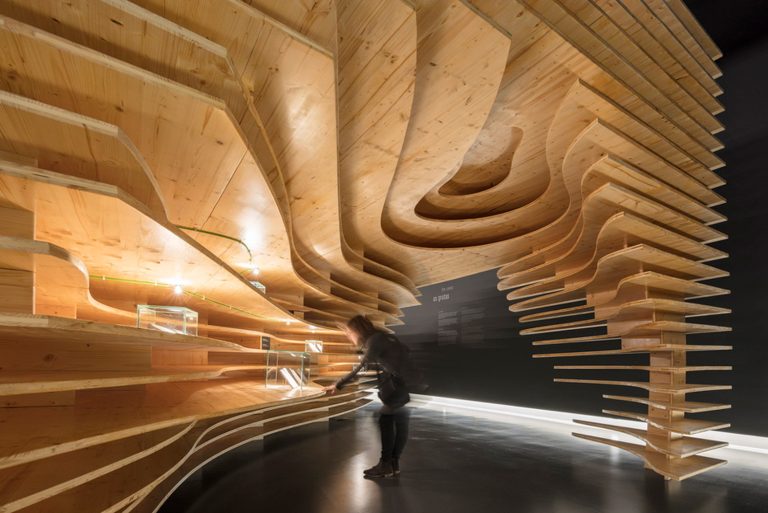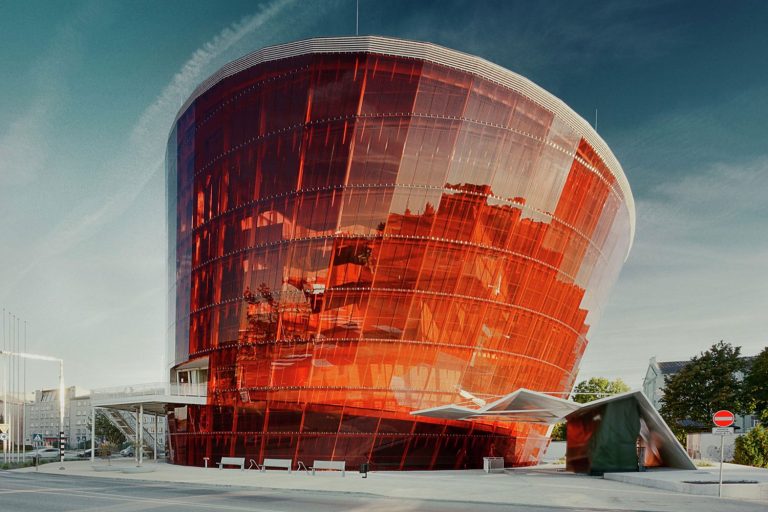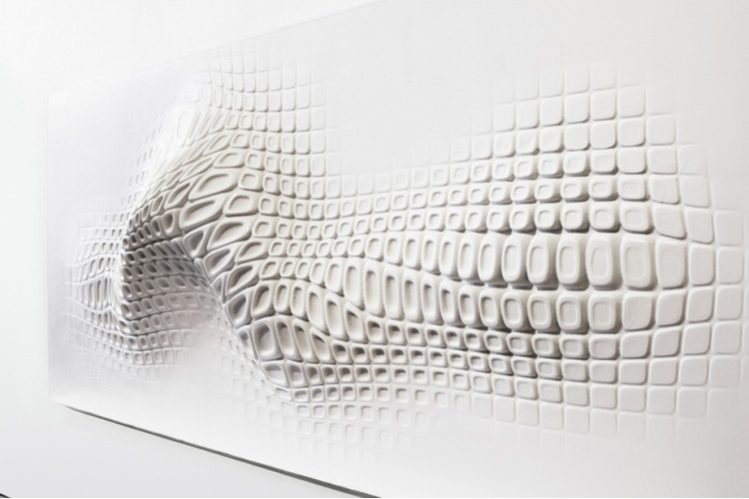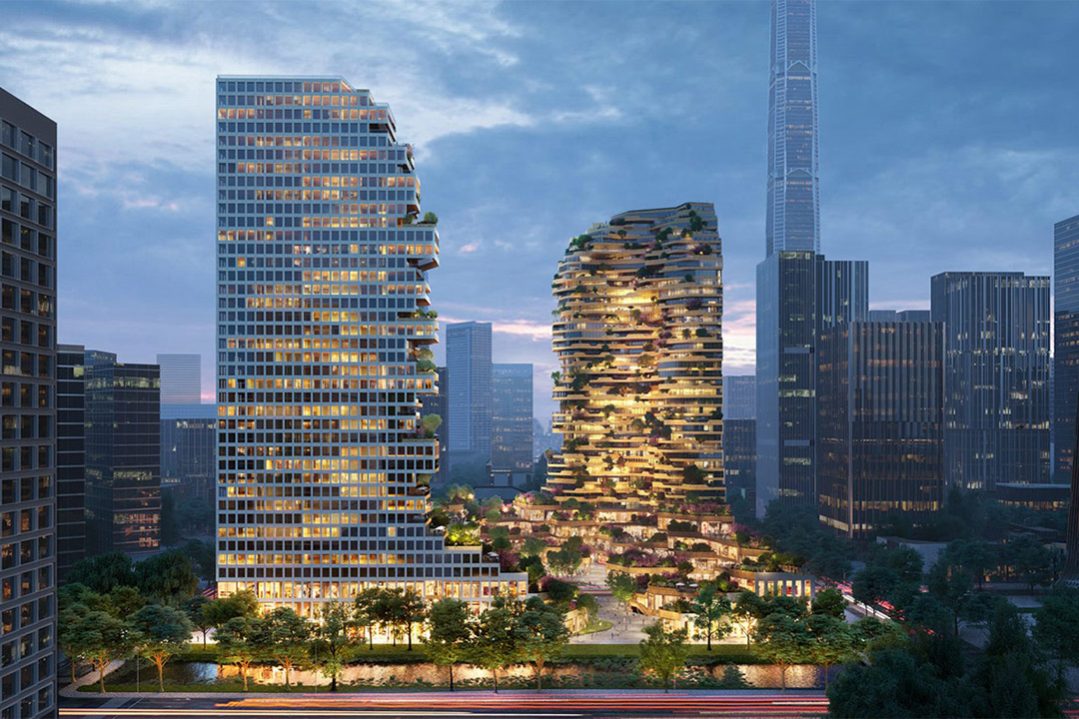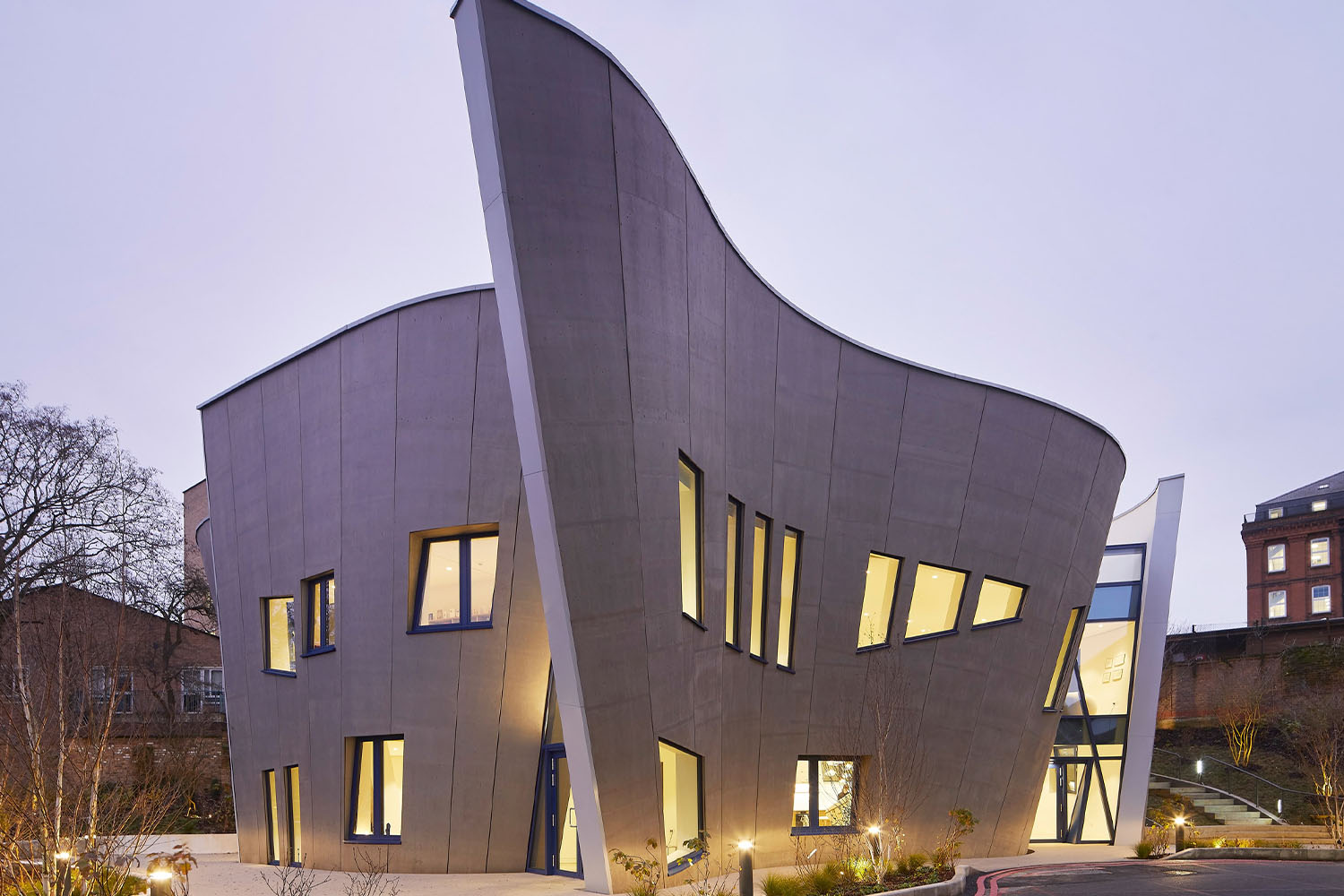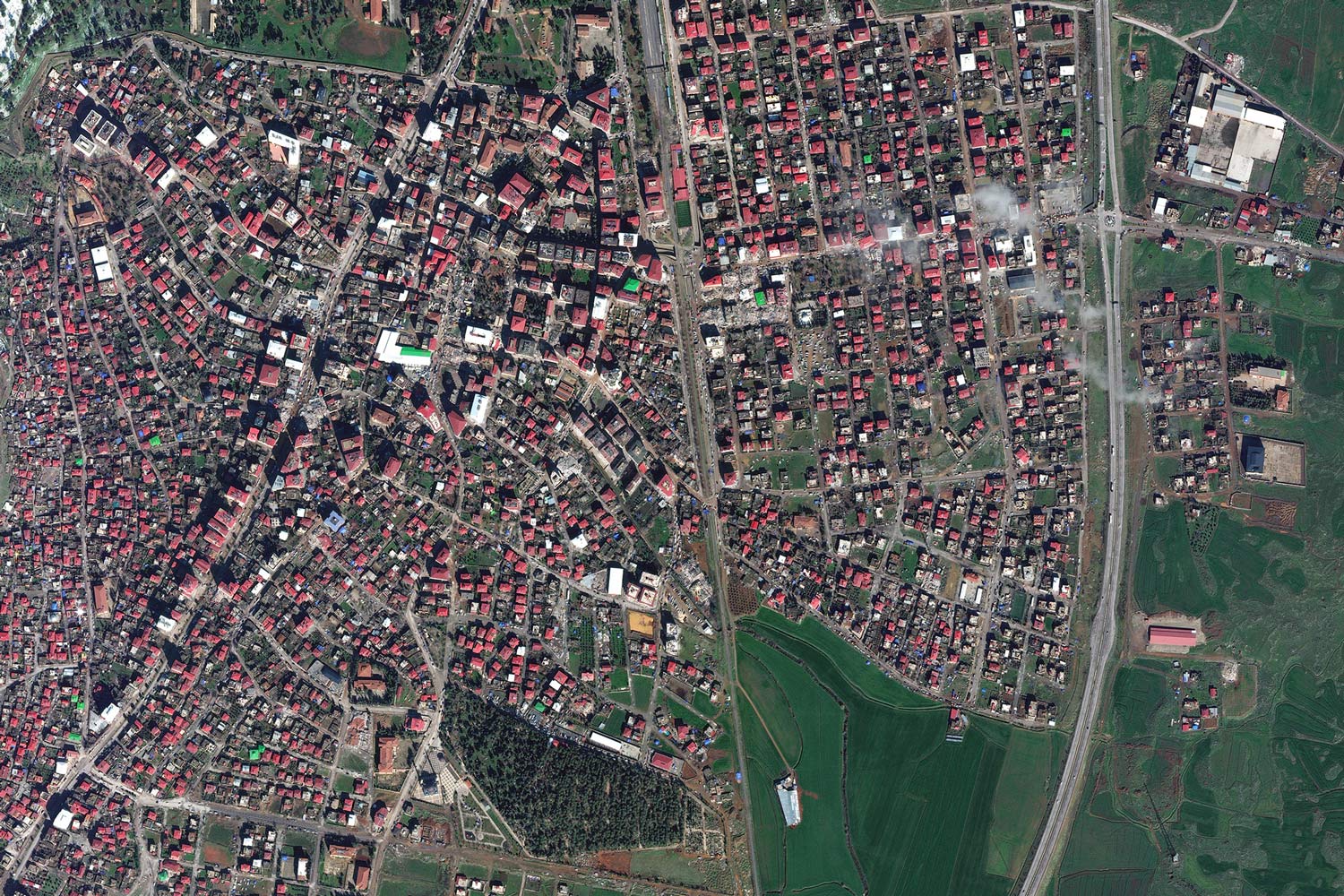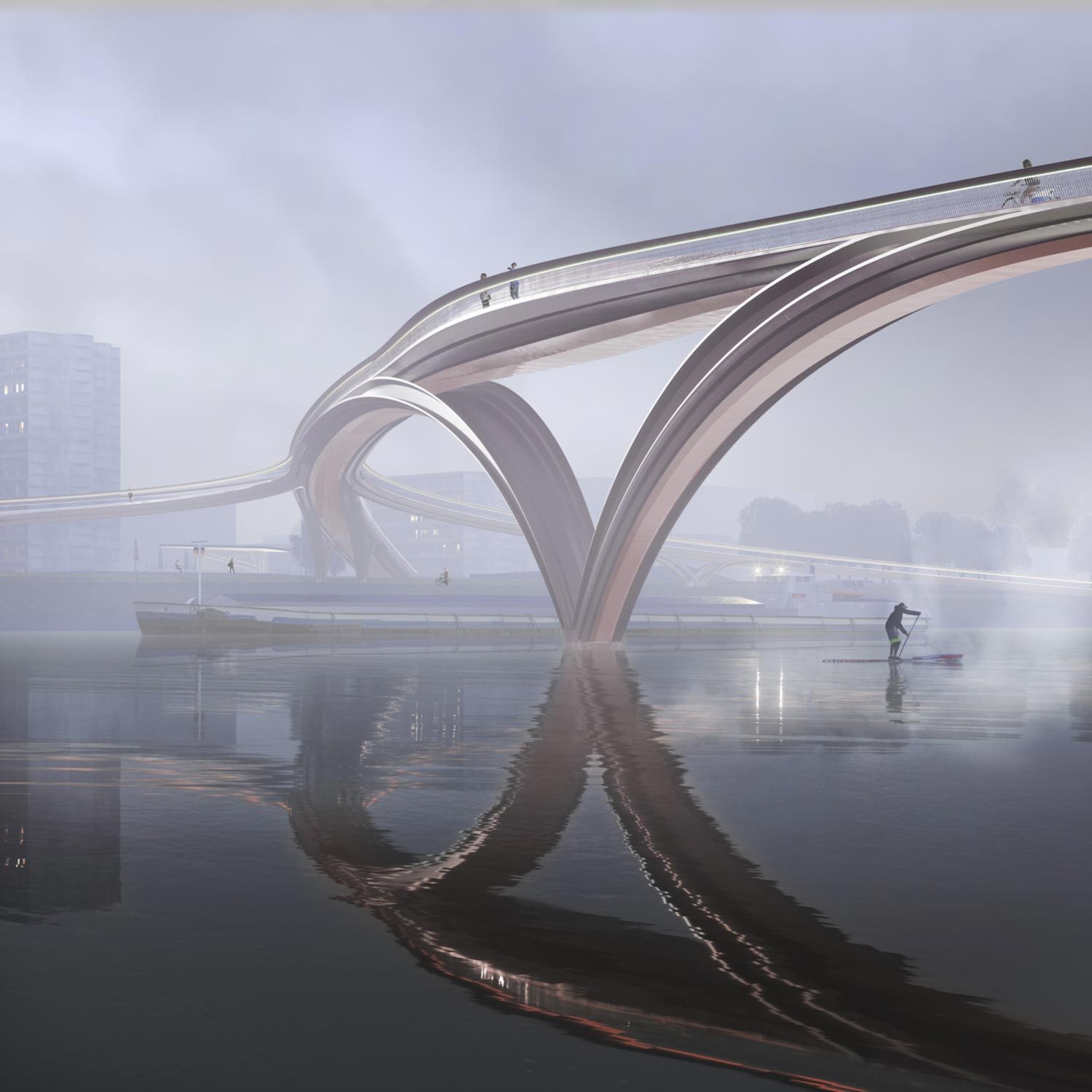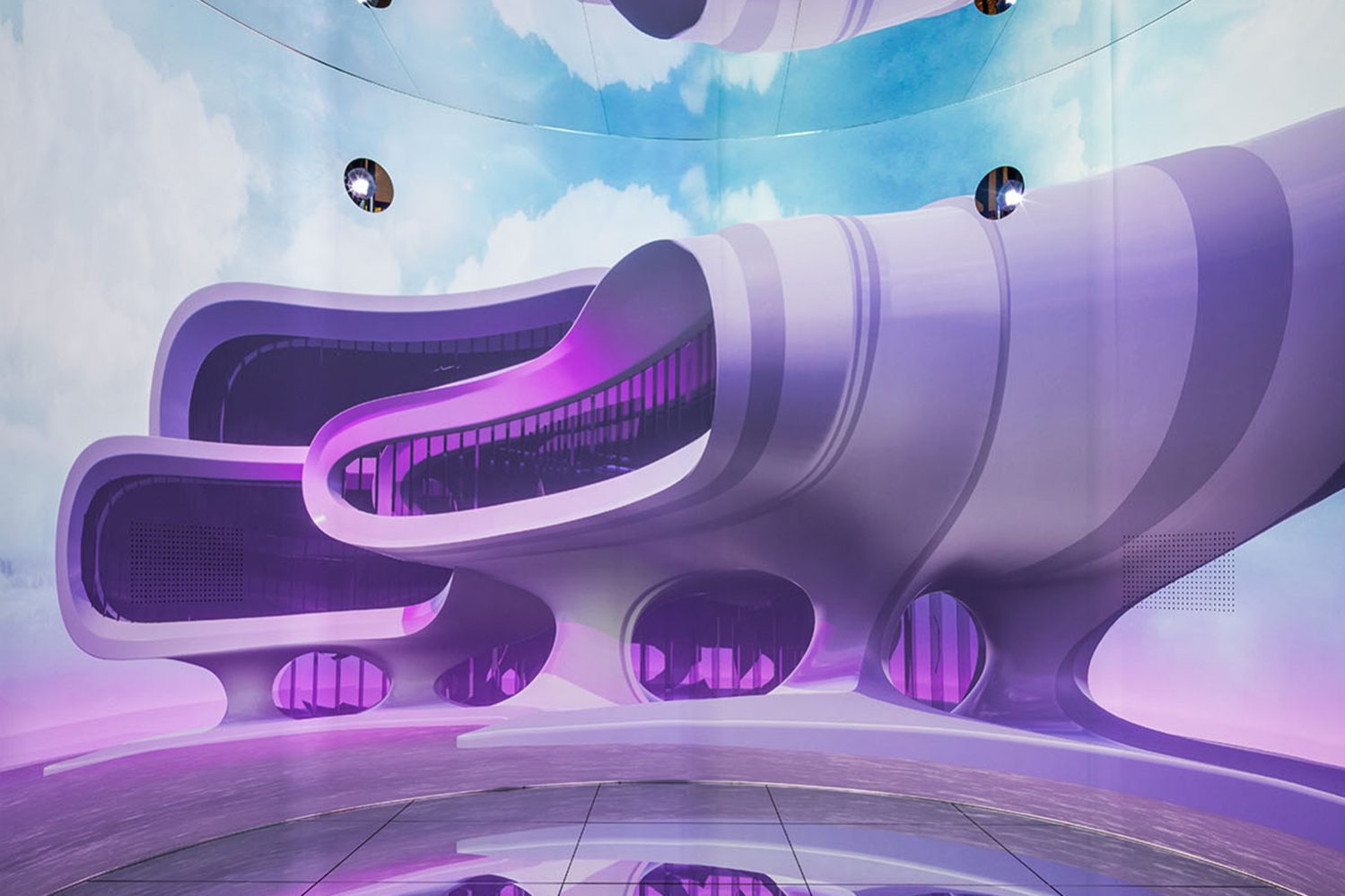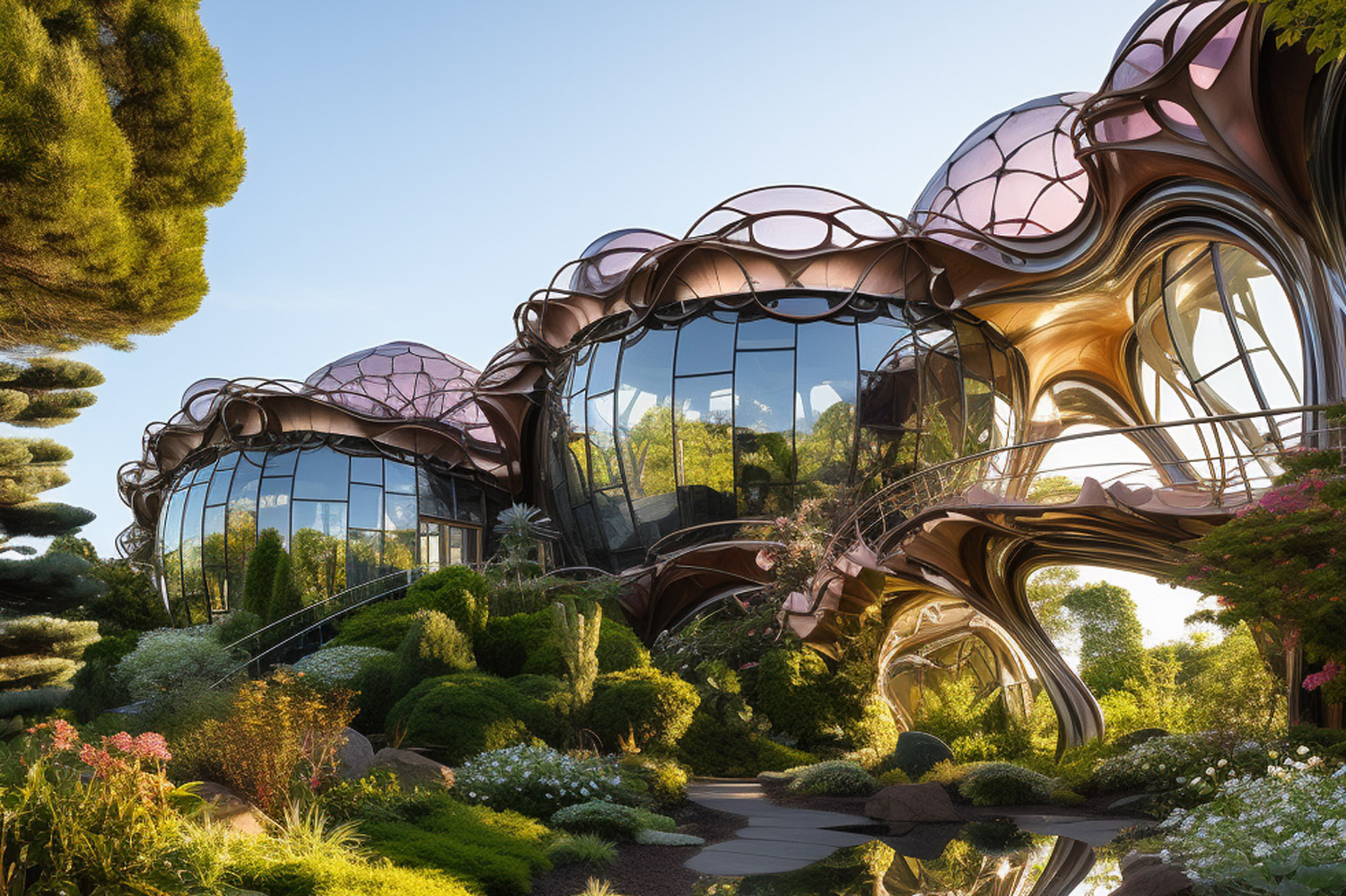
The Eco-Parametric Structures workshop organized by PAACADEMY was held from 2nd March untill 13th April 2021 via an online platform. Studio Mamou-Mani is one of the studio workshops at the PAACADEMY with a focus on comibining sustainbility with parametric design. The studio with the 6 intriguing sessions lead by London based architect, Arthur Mamou-Mani and his team was articulated on the topic of wooden construction through computational design methods. The session focused on developing a parametric, modular and environmentally conscious system in an online studio through interactive workshops and discussions. Click here to register and watch the recordings.
A Quick Jist of the Eco – Parametric Workshop
The workshop was aimed to explore different materials from timber to plywood to develop surfaces, struts and nodes that are climate responsive while having a programmatic factor. It also included a descriptive narrative on how lattices, assembly sequences, digital fabrication and information extracting can be achieved through a parametric model. The workshop was focused on showcasing a dynamic aspect of parametric architecture that, is as functional and affordable while being aesthetic.
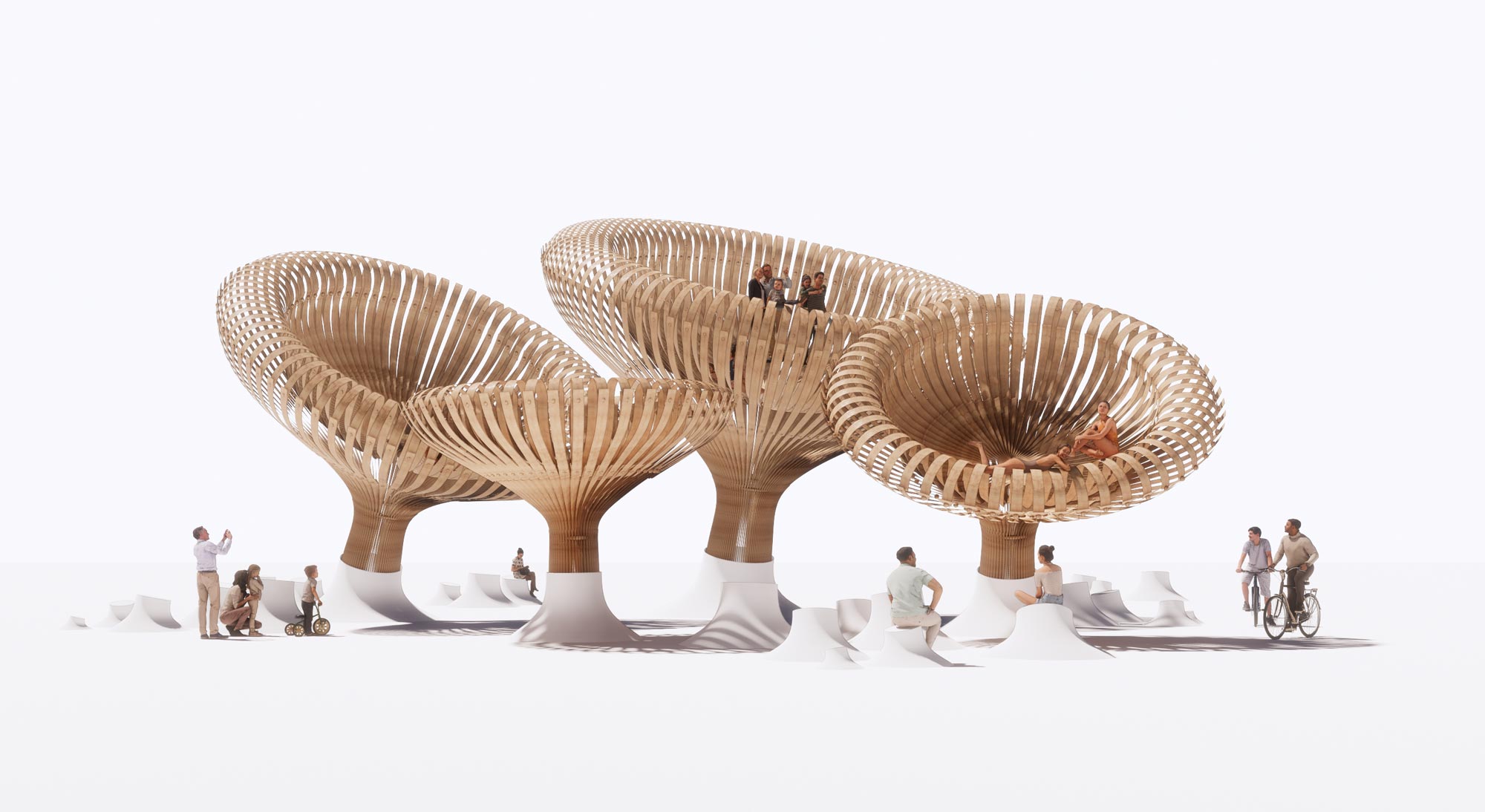
In today’s time when core architectural studio and architects like Bjarke Ingels Group, Foster & Partners, Ai Space Factory and many more are building structures through computational methods while making them environmentally conscious, having a skill set in that direction can truly be an asset. With this intent, the workshop focused on creating unique and adaptable projects that are maximizing the use of inexpensive materials to create realistic architectural projects. A deep insight on bottom-up design and curating modular system through matrices of parametric variations were also explored.
The eco-parametric workshop explored the bottom-up design, and how to grow modular systems through creating and learning from matrices of parametric variations. But most importantly the workshop was focused on how do we let our emotions drive us through a mathematical process. As paradoxical as it sounds. the workshop was focused on creating habitable spaces that are humane and high on computational design finesse.
About the Tutor – Arthur Mamou-Mani
Arthur Mamou-Mani is a French architect and director of the award-winning architecture practice Mamou-Mani. The practise specializes in a new kind of digitally designed and fabricated architecture. He is also a lecturer at the University of Westminster and has given numerous talks around the world on “Eco-Parametric” architectural practice which includes two TedX conferences in the U.S. and France. He has given many lectures on eco-parametric architecture in various institutes and platforms.
A fellow of the Royal Society for Encouragement of the Arts Manufacture and Commerce, he has won the American Architecture Prize, the RIBAj Rising Star Award. He has been awarded the prestigious Pierre Cardin Prize for Architecture from the Academie des Beaux-Arts in France.
The Architects Journal in 2020 named the architectural practice as one of its 100 ‘Disruptor’ practices that are challenging the norms of traditional architecture practice in their drive to bring about sustainable alternatives. Arthur has also founded the digital fabrication laboratory FabPub. This allows the public to experiment with large-scale laser cutting and 3D printing equipment in Hackney, London.
He studied at the École Nationale supérieure d’architecture de Paris-Malaquais and in London, in 2003, at the Architectural Association School of Architecture. He then later worked at Zaha Hadid Architects, Ateliers Jean Nouvel, and Proctor and Matthews Architects. He started teaching Diploma Studio 10 in 2011 at the University of Westminster with Toby Burgess.
He built the Burning Man Temple in 2018, Galaxia, consisting of 20 timber truss petals converging as a spiral towards one point in the sky. He is the first non-US architect selected for this piece of art. In 2019, he designed Conifera, a 3D-printed bioplastic installation for COS, during Milan design week, in the 16th-century Palazzo Isimbardi.
Day 1
The workshop started with the Introduction to parametric and timber design techniques. It included an interactive session of Arthur Mamou-Mani taking the students through some of his astounding works while interacting actively with the students. The core idea behind was to create systems and not forms. Mamou-Mani also took the students through the chronology of parametric architecture and its development over the years.
The session included a three-hour long lecture with a 1-hour long introduction to GH Mirror lab. The session gave a concise jist of the complexity that parametric architecture can resolve through calculative methods.
Day 2
Day 2 explored the various facets of Rhino and Grasshopper through an interactive session. The session focused on providing easy solutions in creating complex geometries. It also explored the various plugins and their advantages while exploring other geometry fundamentals.
Different new terminologies in Rhino were introduced, possibilities of each nerve to create dynamic surfaces, organic structures and creating them through computational design methods were explored.
The workshop also had an interactive student discussion through presentations on various eco-parametric designs of organic plants by exploring their growth, shape, geometries, design aesthetics, patterns, organizational principles, architectural aspects, biomimicry, etc.
Day 3
Day 3 of the eco-parametric workshop included the study of Grasshopper intermediate with complex data trees and intriguing digital fabrication methods to create advanced structuring.
Exploring form works and 3d patterns, the know-how of the possibilities in eco-parametric architecture, studying various organic species and their design pattern, highlights the precision of various plant species were some of the topics that were explored in the workshop.
Day 4
Day 4 went a stage higher by introducing the students to advanced Grasshopper using various plugins like Kangaroo, Weaverbird, Hoopsnake, Octopus, Karamba, Parakeet, etc. The ideation behind it was to help the students in creating a fully integrated model using timber and other eco-materials.
Arthur Mamou-Mani and the team precisely took over the entire narrative of creating these complex geometries by showcasing varied dynamicity in the field of eco-parametric design. Carmen Hu, a member from Arthur Mamou-Mani’s office introduced the advanced geometries in Grasshopper in an intriguing session.
Followed by an interesting review session of the students work with Arthur Mamou-Mani giving his insightful reviews on their works.
Day 5
Day 5 the students created parametric matrices both digitally and physically. This was followed by an interactive review session by Arthur Mamou-Mani which proved to be resourceful to the students.
Material studies, Learning about curves, workshop on grasshopper plugins to create clean geometric forms while internalizing the surfaces, etc were some of the informative learnings that helped students in creating intriguing forms.
Day 6
Day 6 mapped the project development of creating timber structures through the learning from earlier sessions. The students presented their final presentations. The session was joined by Nuru Karim, from Nudes, India as a guest juror.
Architect Nuru Karim, Founder & Principal Nudes received his Masters in Architecture and Urban-ism from the Architectural Association [AADRL] London, United Kingdom in 2006. His undergraduate studies include travel and education in the metropolis of Mumbai [KRVIA-gold medallist] and Montreal [McGill University]. He has worked for Zaha Hadid Architects in 2005 on a host of institutional projects both in competition/ schematic design and design development stages.
The ideas of the workshop were to introduce the natural environment in parametric architecture and how can we implement them in creating structures that are both aesthetic and ecological. By exploring materials and facets of the possibilities of computational methods the students did just that. They created their very own astounding end – products in a mere 6 session workshop. Interactive outdoors sessions like going to the park and observing nature and presenting their insights on the different forms or exploring the various facets of biophilic architectural possibilities in detail helped them in creating dynamic forms.
The session included the final presentation of each group to create a collaborative outcome. Students created exciting end products by applying symmetry to create a crystalline and biophilic architectural system. From various shapes like circles, spines and vectors they used the systems of rotations, double rotations, etc.
Exploring and ideating various external and internal parameters through the creation of plane sand struts helped them understand the complexity from the bottom up.
Deep insights on Mirrolab, Rhino 7 and Grasshopper helped them understand biophilic architecture through computational design methods.
All in all, the Eco-Parametric Structures by PAACADEMY was a one-stop shop to gain knowledgeable insights in the field of blending ecological architecture with futuristic computational and parametric design tools. Stay tuned with us for the publication of the all projects with their unique details. Also, you can click here to register and watch the recordings.



